mytest
eBooks, Books, and more from ARUDOU Debito (click on icon):
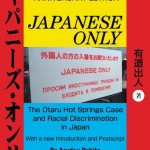
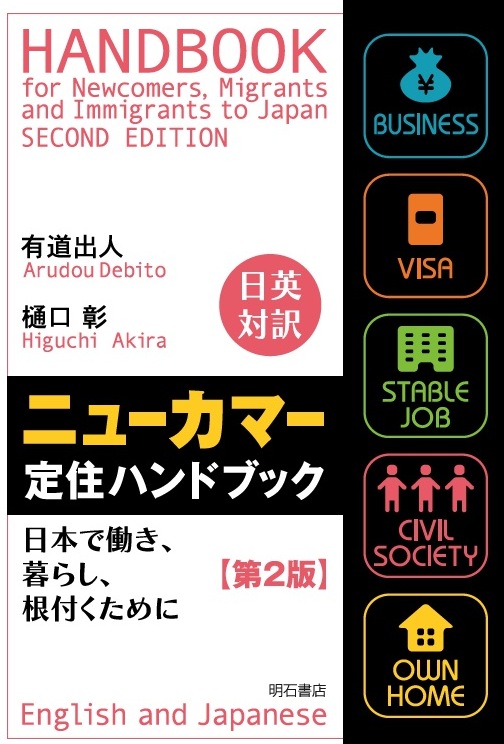
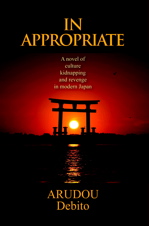


![]()

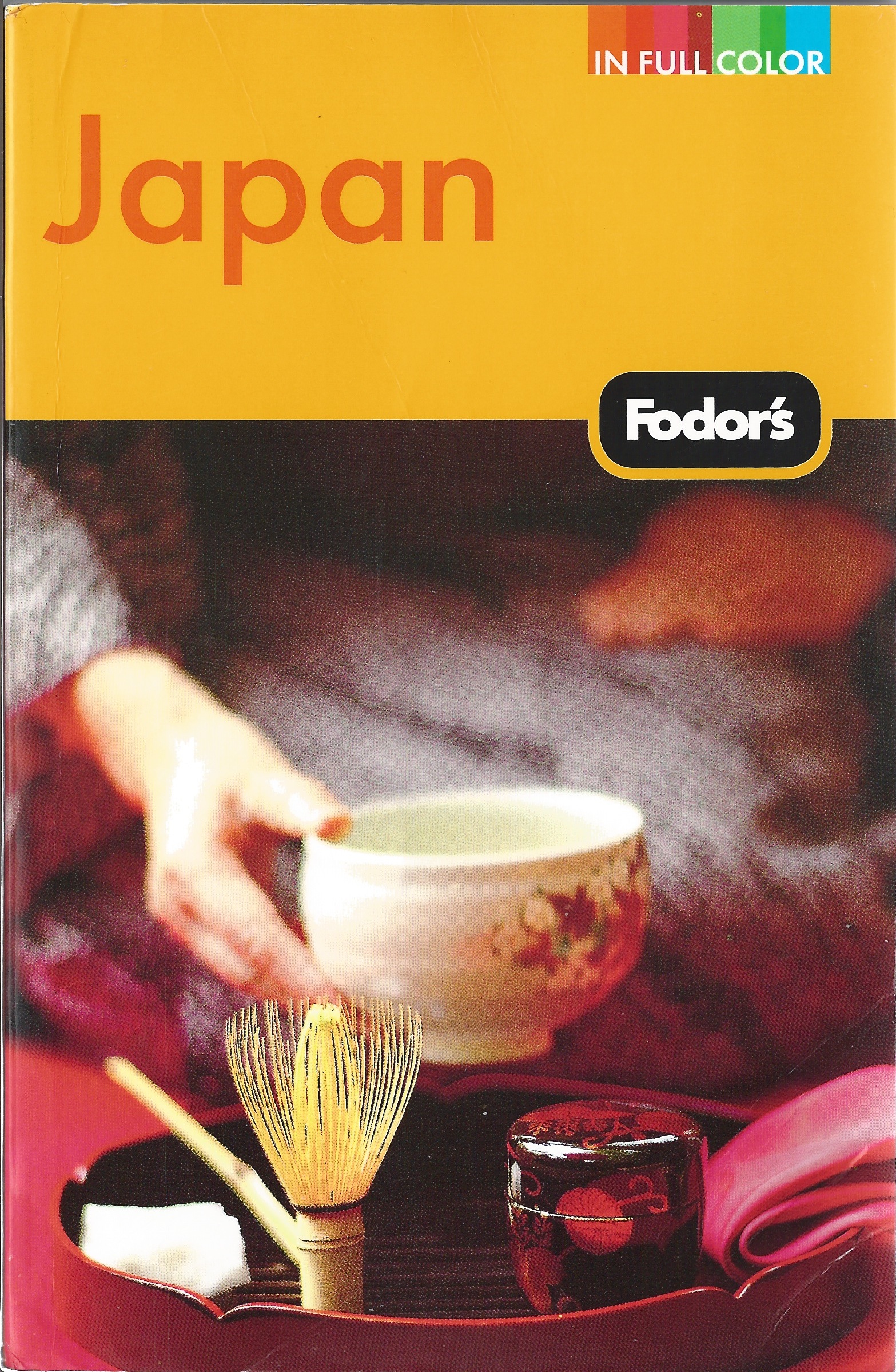
UPDATES ON TWITTER: arudoudebito
DEBITO.ORG PODCASTS on iTunes, subscribe free
“LIKE” US on Facebook at http://www.facebook.com/debitoorg
http://www.facebook.com/handbookimmigrants
https://www.facebook.com/JapaneseOnlyTheBook
https://www.facebook.com/BookInAppropriate
Hi Blog. We have some more harbingers of Japan’s retreat into itself. International marriages are way down, and so are Japanese students studying abroad.
First, check out this significant stat about international marriage: At last measurement, international marriage figures (in blue) have dropped by about 25% since their peak in 2006! (International divorce figures, in yellow, have crept up too.)
(Courtesy the Foreign Affairs Ministry http://www.mofa.go.jp/mofaj/press/pr/wakaru/topics/vol82/index.html. (I’ll talk a little more about the contents of this page shortly, as the focus is on international divorce and the probable consequences of Japan’s signing the Hague Convention on Child Abductions.)
I call it significant because it removes one of the fundamental means to Japan’s increased diversity. If Japan’s perennially low birthrate means fewer children, having fewer international marriages means probably fewer international Japanese children. And this will quite possibly lead to further marginalization of the “half” population as a temporary “blip” in international coupling (last seen as a “social problem” with the Postwar konketsuji mixed-blood children, publicly stigmatized for being “bastard children of prostitutes”; see Fish, Robert A. 2009. “‘Mixed-blood’ Japanese: A Reconsideration of Race and Purity in Japan.” Pp. 40-58 in Weiner, ed., Japan’s Minorities: The Illusion of Homogeneity. 2nd ed. Sheffield: Routledge.)
As a tangent, note the normalized racialization of the GOJ’s illustration above, where the “foreigner” is male and blue-eyed. Even though the majority of Japanese-foreign marriages are not “Western male” either in terms of marriages in general or even foreign husbands in specific, perpetually! So says MHLW:
 Courtesy http://www.mhlw.go.jp/toukei/saikin/hw/jinkou/suii09/marr2.html
Courtesy http://www.mhlw.go.jp/toukei/saikin/hw/jinkou/suii09/marr2.html
=============================
Next up, consider how Japanese students are not going overseas much (according to the Japan Times, they are being significantly outdistanced by, for example, the South Koreans and Chinese):
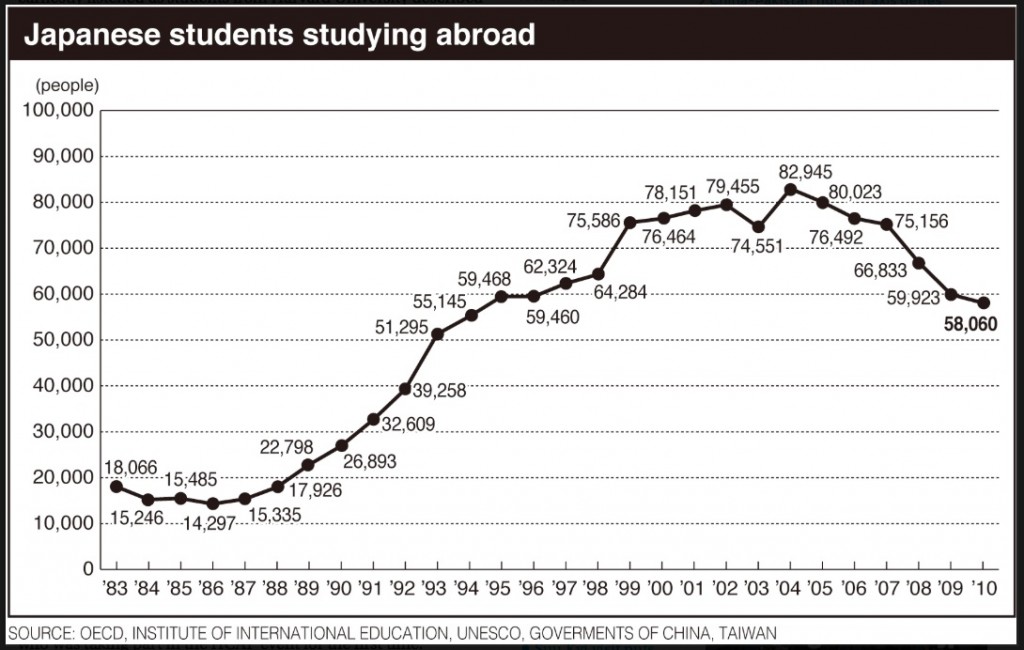 Courtesy of http://www.japantimes.co.jp/news/2013/04/19/national/high-schoolers-dream-of-ivy-league/ and JJS.
Courtesy of http://www.japantimes.co.jp/news/2013/04/19/national/high-schoolers-dream-of-ivy-league/ and JJS.
That said, I’m a bit skeptical about whether this trend means a great deal, as I don’t think people who study abroad necessarily become more broad-minded or open to outside ideas (and Japanese society has structural mechanisms for marginalizing students who leave the system anyway). Moreover, the domestic discourse nowadays is finding ways to rationalize away the need, for example, to study a foreign language at all. Nevertheless, I would argue that these trends are not particularly good for Japan, as they are not only harbingers of insularity, but also encouraging even further insularity in addition to recent trends I have written about before. Arudou Debito

15 comments on “Harbingers of further insularity: J international marriages way down, as are J students studying abroad”
Also telling is how in the cartoon g-Hubby looks angry while j-Wife looks sad.
The fact that there are fewer foreigners living in Japan possibly is one factor, but I definitely agree that Japan is more insular in some ways than when I first was in Japan.
First, I be curious to how many of the international marriages between Japanese and Koreans are mostly likely between Japanese and Koreans that have been living in Japan their entire lives, without ever obtaining Japanese citizenship.
Second, I’d say the reason for the fall off in studying abroad has more to do with economics and to a lesser degree the Internet.
I am sure there are a number of reasons for the drop but I suspect the word is spreading that if you marry and divorce in Japan with children you’re up the creek. I discovered my wife was having an affair with the father of my son’s friend, only one month after his wife (friend of my wife) died from cancer. I never realized how deeply she was into astrology and she thought she was in communication with the spirit of her friend (I know this through email thanks to keylogger program and statements from my neighbors). The next day, after I confronted my wife about the affair she took my children with her to live with her lover. At that moment, under Japanese law, my children are gone. Subsequently, I am suing her lover for damages and in response, my wife is suing for divorce which I am fighting. Currently, this man lives with my children every day, but if I try to see or communicate with them I am considered a criminal. On top of that, if and when there is a divorce, they will marry but I will still be liable for child support under the law. On one hand, divorce in Japan can be very easy and painless, but once children are involved and you are not Japanese, prepare to have your heart ripped out and relive it everyday for the rest of your life. There is a reason having your children taken away is called the “living death.” (By the way, my Japanese neighbors and all my wife’s former friends have been behind me 100% but at the end of the day there was little they could do except pass information to my lawyer. Also, the general opinion, was don’t sweat it just get a new family. They understand why I am upset about my children but only up to a point.) I have now heard many similiar stories regarding child custody in Japan not mentioned on the internet through my lawyers and others. Back in 2005, I remember hearing about the rise in international marriages and the same time you heard alot about how to buy homes in Japan. The numbers will keep going down.
I think that the fall off in the number of Japanese studying abroad is a result of the bad economy after Lehmans shock. Students don’t want to risk job hunting prospects in the rigid system that Japan has, by going overseas for a year, and then coming back to compete against students a year younger than them, or graduating one semester late.
Another factor is that Japanese students have been seeking ‘safer’ long term job prospects (applications to be koumuin and JR employees, for example, have increased more than double since Lehmans shock). In bad economic times, the Japanese go back to first their principles of ‘myth’; life-time employment in a big safe organization. You don’t need a year overseas for that.
The same phenomena was seen directly after the bubble burst, with the result that many Japanese companies now have a mid-management that has had very little exposure to the world at large, and a very conservative (read; narrow minded) world view.
— Any links to substantiate claims such as koumuin and JR employee app numbers?
@ Matthew Vetrini #3
I am curious too, but in a different way.
I want to see a break down by gender and nationality.
The last time I checked (maybe 2008?), Japanese men marrying Chinese women was the largest group of intercultural marriages (900+ per year) in Japan. I would love to see the figures since the Senkaku dispute flared.
At that time, Japanese women were by far outnumbering Japanese men for marrying non-asians.
Again, hats off to Japanese women for leading the way by marrying ‘visible’ minorities, whilst japanese men were (at that time) marrying Chinese women, and getting them to change their names to Japanese kanji readings, and naturalize, to obscure their ethnicity. On the contrary, in relationships where japanese woman were marrying non-asian men, both parties were overwhelmingly retaining their original nationalities. It would be interesting to do more work on this issue, since I suspect the motivations of Japanese for marrying NJ by gender, would show some interesting disparities in motivations.
@ Trustbutverify #1
‘Also telling is how in the cartoon g-Hubby looks angry while j-Wife looks sad.’
It’s deeper than that. This graphic was created by a knowledgeable marketing/propaganda expert.
Yes, the NJ hubby is visibly angry, whilst the J-wife cries, but also look at the child! The child is crying and facing in the same direction as the mother, away from the father. This is not some random pic. This has been carefully designed by someone who understands the psychology of the image to send a subconscious message; if you marry a foreigner, his anger will be directed at you and the child (protect the child from the violent NJ! Don’t make the mistake of marrying a ‘gaijin’).
This sort of thing is done in marketing and advertising every day. The key question now should be who created the image, and what was the brief from the client, and who approved the final image. It reeks of hidden official agenda to me.
@ Mike, yeah I got divorced from my J wife as I was not sure if we had kids we might get divorced at some point. I couldnt take the chance…
Two weeks ago, I talked with one American friend about the decline of Japanese students coming to the US. He was asking if it’s true that Japanese society is reverting back to cultural homogeneity while many Japanese workplaces are not considering students with foreign experiences beneficial to them anymore. I answered not sure about the former, but I nodded on the latter. I hear ministry officials and media worry about young Japanese’s hesitancy to step outside Japanese soil, but I’m not very convinced that will make much difference to them in a long term. Many Japanese eventually come back to Japan, and get a job at Japanese company that forces returnees to conform to tatemae-oriented hierarchical culture for the rest of their life. If the ministry expects Japanese students to study abroad, that’s fine. But they don’t have to follow national narrative of education framed as means to economic competition. It is promotion of Yamato-centricity in public education and social norms that will likely contribute most to the development of their insular mindset.
Also noteworthy, and perhaps a silver lining in this cloud, is that the percentage of marriages that contain a non-Japanee partner has increased. Back in 1970 when they began keeping these statistics, 99.46% of marriages were between two Japanese nationals. Since the early 1970s, the birth rate has dropped steadily almost year by year, and today the cohort of people of typical marriageable age (born between the early ’70s and the early ’90s, say) contains fewer and fewer people with each successive birth year. The total number of marriages will naturally show a decline, year over year.
If society contains 1.7% non-Japanese, and people marry at random, we should expect to see 96.6% of marriages be between two Japanese nationals and the remaining 3.4% have at least one non-Japanese partner. We in fact see 95.14% all-Japanese and 3.86% international marriages, meaning that if the marriageable-age cohort has the same distribution of non-Japanese people as the population at large, marriages today in fact have a slightly greater probability of including at least one foreign partner than pure chance would dictate, despite the decline since 2006. When the international marriage rate falls below what randomness would predict, then I think it would be safe to begin connecting this to society’s increasing insularity.
— Very well reasoned, and well argued, thanks for taking the time. Alas, I doubt much media will ever see this in such detail. They’ll just look at the quarter drop in marriages since peak (as I did) and say, “Wow, Japanese aren’t marrying foreigners anymore.”
The issue is certainly complex but I do remember there was a positive feeling in the air around 2005. You did hear alot about international marriages and at the same time information began emerging about how to buy property in Japan and in the background was increased discussions regarding citizenship. Regardless, of what else was happening in the world, you did get a feeling you could live a comfortable life with a family in Japan. At least, that was my general impression. Anyone else? I guess it began to change with the start of the financial crisis then compounded by the earthquake and now the change in political winds. But even in the Japanese media it has been pointed out the increase number of divorces due to the earthquake among Japanese. I am sure there is a word for it like the old Narita divorce. It would be interesting to look at the numbers if there is something to that or just another “fad” word.
@#1, #7
Not only that. Look at the broken blue heart. Now see that it’s the same colour as the “rate of marriage” in the bar graph. The connection is clear: marrying a foreigner will lead to heartbreak.
The kid has round blue eyes in the before pic, and narrow brown eyes in the after pic – why? Also, all the tears in the second pic are on the mother’s and child’s side.
Notice how the kid is wearing the same colour shirt as the “divorce rate” bars? I think it clearly implies that divorce will only increase, just like the growth rate of a child.
It’s always amusing to hear about how officials from this Ministry or that are concerned that not enough Japanese are studying abroad and so forth, and the things they are doing to help stop the slide into insularity. But if you look at a government directory, the number of bureaucrats who have graduated from a non-Japanese university is basically zero.
And while we’re all speculating about hidden agendas in the pictures, why is there a kid in the “marriage” picture? Insinuating that “international marriage” (and I hate that term – it adds to the insuarity / Japan-is-unique mentality) is shotgun marriage? Or for silly women who just want to have “haafu” kids?
Anyway, the whole chart is useless unless we have national marriage and divorce rates to compare it to.
— Follow the source link like I suggested for the context. It’s about Japan and the Hague Convention on Child Abductions. Therefore there is a child in the equation. And that’s why there is no comparison to domestic marriage and divorce.
Cojo: Though I agree with much of the gist of your post, your last comment is wrong. I don’t know about the members of the congress, and it wouldn’t surprise me if that were the case, but the top level recruits in the Ministry of Finance and Ministry of International Affairs are required to go on to get a graduate degree in a foreign country within 2-3 years of training.
— I guess it’s time for both sides of this debate to provide some sources, please.